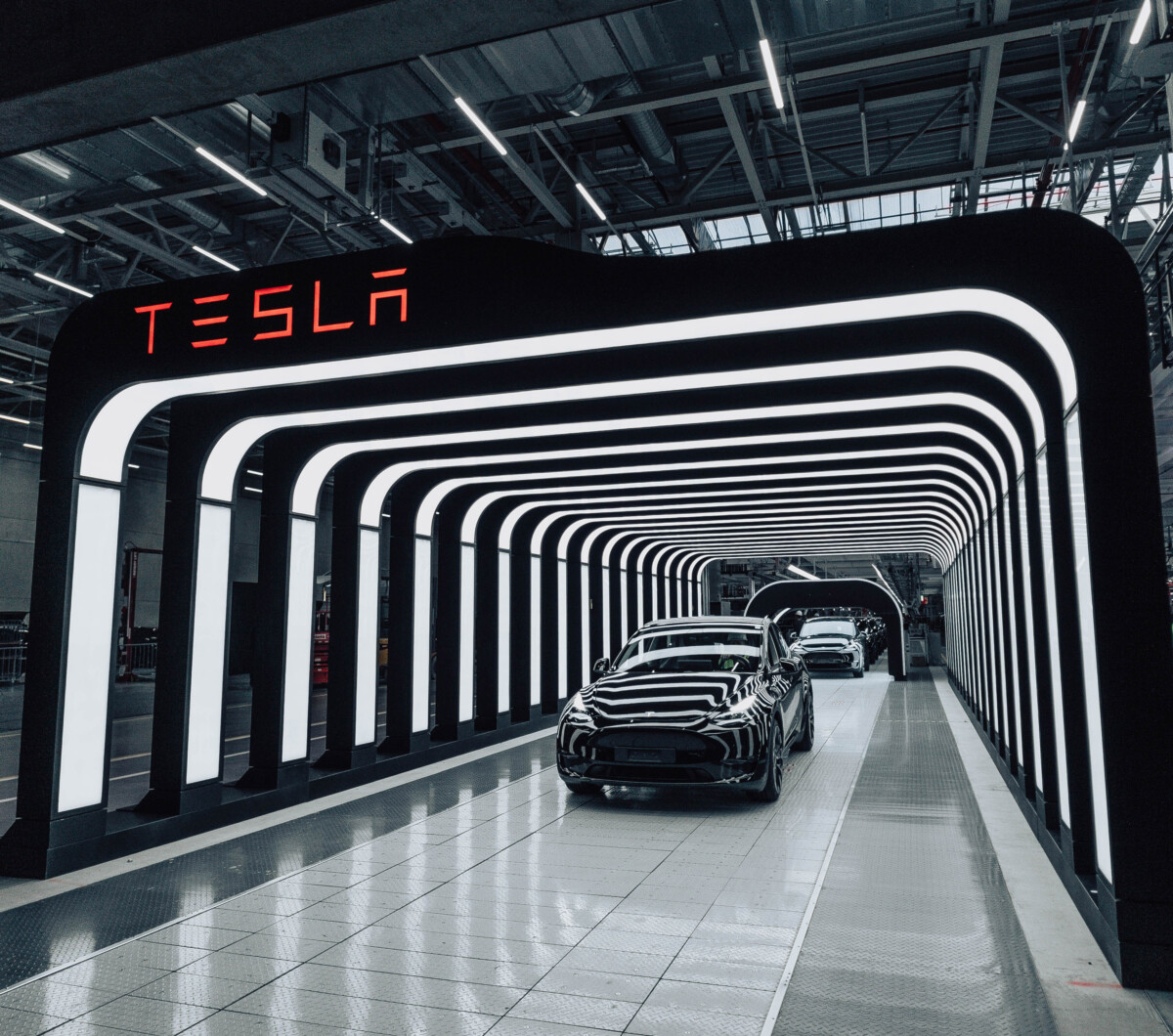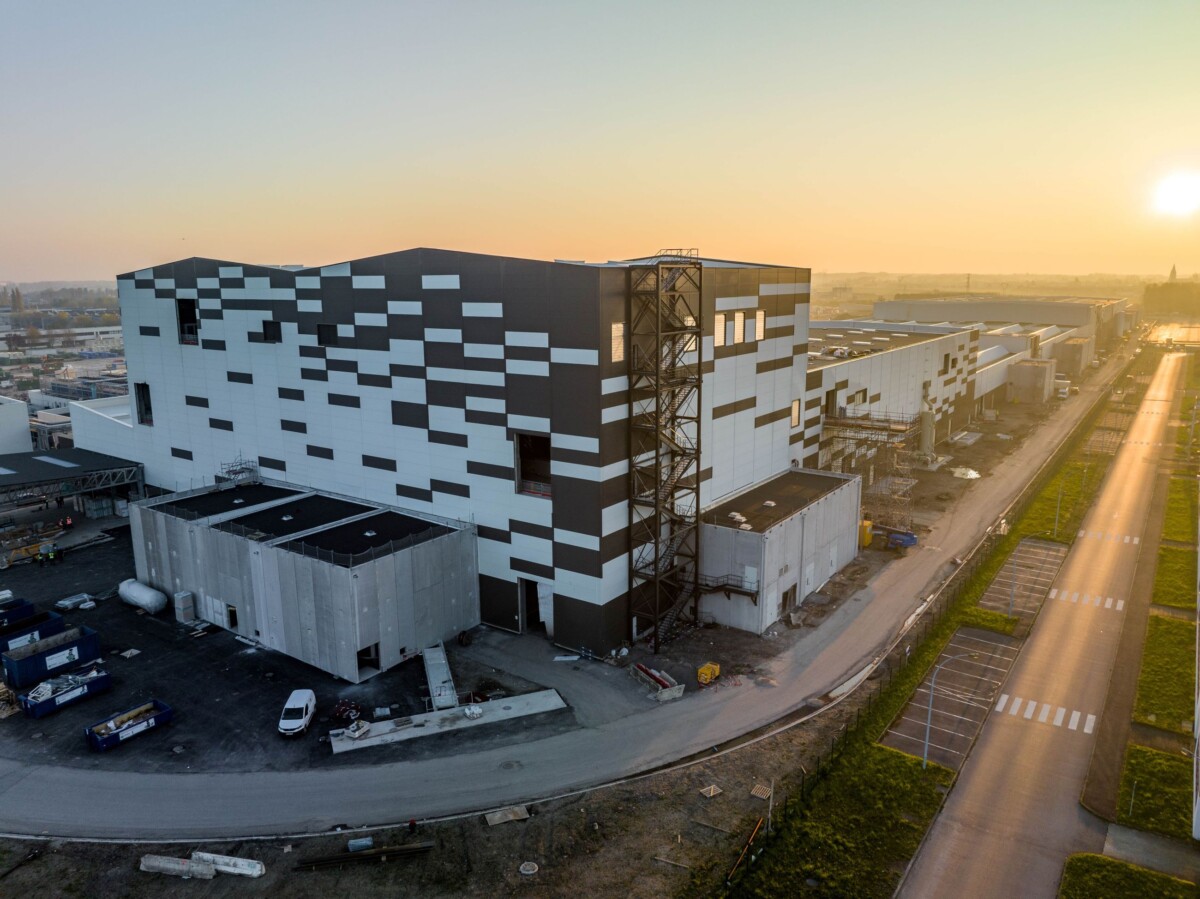Gigafactory: this is a term that has become more popular in recent years with the advent of the electric car. The “gigafactories” are multiplying in the world, with various projects in particular in the United States and in Europe, in particular in France. But what is a “gigafactory”? Where does this term come from? What projects are currently underway? We offer you a brief overview.
Often, most people associate the term “Gigafactory” with Tesla and of course they are not necessarily wrong. For what ? Because it is precisely Tesla who has democratized this term in recent years. But why the term “Gigafactory”?
Tesla did not look far, since the name “gigafactory” comes from the word “giga”, the prefix for the unit of measurement corresponding to the billion and the English word “factory”, meaning factory. We first hear the term in 2014, although Tesla’s first big factory dates back to 2010, when in May of this year Tesla Motors bought the Freemont factory to assemble the Model S there. factory is renowned Tesla Factory.
Already five Gigafactories for Tesla
The term then evolves as Tesla’s ambitions evolve too. In order to save money on very large scales, Tesla wants to build a giant battery factory for its electric vehicles.
The first Gigafactory, soberly called “Gigafactory 1”, is the one located in Nevada. It is dedicated to the manufacture of lithium-ion batteries. Gigafactory 1 began manufacturing batteries in January 2017, but lower-than-expected production caused delivery delays. However, the Giga Nevada will quickly reach a good cruising speed since, at the end of 2018, the objective of 35 GWh (gigawatt hour) / year is reached two years in advance.
Earlier we told you that the term “Gigafactory” dates back roughly to 2014. Let’s say it arrived at the same time as the announcement of the Tesla Giga New York (or Gigafactory 2), the name given to the brand’s photovoltaic cell factory, located in the city of Buffalo. The construction of the Gigafactory 2 was announced in 2014 and it becomes operational in August 2017. Since 2019, the Tesla Giga New York has also been producing the Solar Roof, these photovoltaic cells which look like tiles and which allow it to be powered by solar energy a house.
The Giga New York preceded the Gigafactory 3, one of the most important since it is the one located in Shanghai. This factory marks a new era for Tesla, with very large-scale worldwide production. It is also thanks to this factory that Tesla was able to beat several sales records in the world.

The Shanghai Gigafactory produces several thousand cars per week, namely Tesla Model 3s and Tesla Model Ys, with a production target of 500,000 vehicles per year. On December 30, 2019, less than a year after construction of the factory began, Tesla delivered the first Model 3s off its production lines.
After the Shanghai factory, Tesla opens its fourth establishment with the Gigafactory in Berlin, a path fraught with pitfalls for Elon Musk, the boss of Tesla, due to the legendary European bureaucracy and the actions of certain environmental activists.
The factory is intended to produce several thousand cars per week, initially Tesla Model Y then the Tesla Model 3, with a production target of 500,000 vehicles per year. In addition to the production of battery packs and powertrains, this plant will be the first in which the manufacturer will also produce its own battery cells.
All in one somehow, Tesla wants to have total control over its production line. In the long term, the site could produce more than one million vehicles per year. It could even become the largest battery factory in Europe, if not the world.

Tesla recently opened a fifth Gigafactory on the Texas side of Austin, USA. Construction began at the end of July 2020 and the factory was inaugurated by Elon Musk on April 7, 2022. Its capacity will be around 500,000 cars per year. At first, this site will produce Tesla Model Y, then the Tesla Cybertruck. Next will come the Tesla Semi and the Tesla Roadster. There is also the production of Tesla’s famous “revolutionary” 4680 batteries.
Many ongoing projects
If the term Gigafactory was indeed democratized by Tesla, the American manufacturer is not the only one to have several “mega-factories” for electric car batteries and their assembly. Recently, we also offered you a file on the manufacture of electric car batteries, with a map of these famous gigafactories in Europe.
For the moment, apart from Tesla for whom the application is concrete, we only have gigafactory projects, whether in the United States or in Europe.
Here are some of the main projects currently confirmed in Europe:
- Northvolt – Volkswagen project (Germany)
- Northvolt-Volvo project (Europe)
- Stellantis project – Douvrin (France): the project is led by the ACC joint venture between Stellantis and Saft, a subsidiary of Total
- Renault project – Douai (France)
- Verkor project – Dunkirk (France)
- CATL project (Germany)
- SVOLT project (Germany)
Other projects are also being finalized in France, with McPhy near Belfort (France), and Symbio in Saint-Fons (France).
As you can see, there are a lot of projects in France, and especially in the north of France. This region also has a new nickname, that of the “battery valley”, a bit like the “Motor Valley”, fertile land of supercars which is located in Italy and where we find manufacturers such as Ferrari, Lamborghini or even Maserati.
Europe is strengthening at high speed
France is therefore very well placed to become a new major player in the production of batteries in the world, but it will probably be overtaken by Germany in Europe. If there are currently four projects recorded in France, across the Rhine, three times as many battery factories are currently planned.
In total, German production should reach nearly 435 GWh (about twice as much as in France) per year by 2030, enough to supply batteries to about five million electric cars. With this figure, Germany would become the largest European producer of batteries. The first German factory has just started production.
For the rest of Europe, it’s a little slower, even if Italy currently has three projects, while the Chinese CATL announced the establishment of a factory in Hungary last year.
The United States will undoubtedly reshuffle the cards
But be careful, the United States could play a trick on Europe. And that is what is looming, even if Tesla, for example, has already announced that, despite American tax incentives, this will not change the brand’s investment strategy in Europe, and in particular in France.
Remember that the Biden strategy provides for bonuses for electric vehicles produced entirely in the USA. This has already encouraged some builders to revise their plans. Stellantis will take advantage of the situation and probably open two other factories after those in Canada and Indiana. This information was also confirmed by the CEO of the group, Carlos Tavares to journalists during the inauguration of the first battery factory in France.

Carlos Tavares clarifies that this new law creates investment conditions “very favorable” in the USA. With soon four gigafactories in North America, the objective of reaching an overall production of 400 GWh per year by 2030 will be realistic, as well as the decarbonization of all the activities of the group by 2038. It must be said that the US law allows one-third of the battery production cost to be covered.
At the same time, Toyota has also just announced a new investment of two billion euros for a gigafactory located in North Carolina. For the record, Toyota initially wanted to fund the project to the tune of 3.56 billion euros (1.21 for batteries for hybrid vehicles and 2.35 for electric vehicles). With this new investment, Toyota thus contributes more than 5.5 billion euros dedicated to the projectwhich will have up to six production lines.
This will allow Toyota to produce its first electric car in the United States, a seven-seater SUV, by 2025. The car will be assembled at the Georgetown, Kentucky site (it’s the most productive Toyota plant in the world with an annual capacity of 550,000 vehicles per year), while the batteries will come from the future gigafactory in Carolina. du Nord which should be operational in 2025.
The Volkswagen group is also particularly active. The company originally planned two battery factories in Europe, but in 2021 further announcements have been made and now there are six different factories planned by Volkswagen across Europe. Even if Volkswagen is also eyeing the United States.
There is the German site of Salzgitter, whose work began in the summer of 2022, and production should begin in 2025. There is also the Swedish site in partnership with Northvolt, which has already delivered its first batteries since the end of the year 2021, while the third plant is confirmed is in Valencia, Spain. The other three factories do not yet have a location revealed to the public.
To follow us, we invite you to download our Android and iOS application. You can read our articles, files, and watch our latest YouTube videos.
